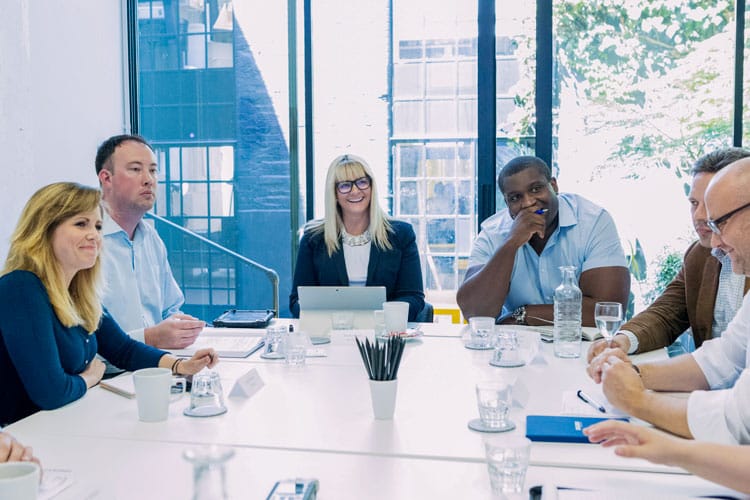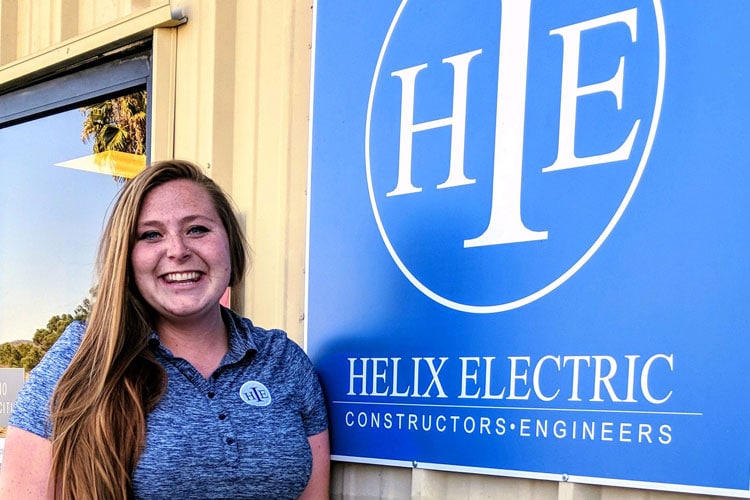Achieving a diverse workforce is a crucial exercise for general contractors. Not only does it improve internal culture, diversity also can dictate overall success—especially for companies with women and minorities in managerial and C-level positions. Having dedicated her career to this progressive advancement, PCL Diversity and Inclusion Manager and National Association of Women in Construction (NAWIC) LA Chapter President Priscilla Chavez fights the good fight.
“Diversity and inclusion absolutely impacts the bottom line, 100%,” asserts Priscilla Chavez. She’s not wrong. Studies like management firm McKinsey’s “Delivering Through Diversity” report found that “companies with the most ethnically diverse executive teams—not only with respect to absolute representation, but also of variety or mix of ethnicities are 33% more likely to outperform their peers on profitability.” While eye-opening, these statistics prove that not only is creating a diverse workforce the right thing to do, it is also the most profitable. According to a Forbes article citing the same report, gender diversity also dictated more success. The report states that “gender diversity in management positions actually increases profitability more than previously thought… companies in the top 25th percentile for gender diversity on their executive teams were 15% more likely to experience above-average profits. The latest data shows that likelihood has grown to 21%.” Given the talent shortage in architecture, engineering and construction industry, achieving enterprise diversity can be tough, especially in competing with other industries that are less labor intensive. Chavez sat down with StrXur to explain how she uses her role in tackling that obstacle, the importance of peer mentorships and why representation is so important.

Built Blog: How did you get into the AEC industry? How did that experience shape your current role?
Chavez: I’ve been in the industry for nearly 12 years. I began working for a small, woman-owned consulting business where I learned the value of small and women-owned businesses and the support that they can provide general contractors. Diversity, inclusion and equal pathways for minority and women-owned businesses became very important to me. I truly believe it’s my calling.
Built Blog: What are your goals as manager of diversity and inclusion? What are some of the challenges you face?
Chavez: I want to diversify the pool of subcontractors and subconsultants PCL works with, making sure we’re developing the workforce around the projects we’re working on and ensuring equal hiring practices across the board. I am also focusing on government relations and community outreach. I think one of the biggest challenges is purely obtaining talent. There are so many opportunities that exist in construction today for women and minorities. The industry needs more millennials and diverse groups of individuals to bring forth their creative ideas to the table. There are positions that require a degree, but there are also positions that don’t. You can work hard and see the aftermath of what you worked on.
Built Blog: Along those lines, how would you describe the current industry in terms of opportunities for women and people of color?
Chavez: There’s a lot of opportunity. We’re in the largest construction boom, possibly, since the great depression. There’s a high demand and not enough supply and not enough people to work on these construction projects. This offers a huge opportunity for women and people of color. Everyone in the general contracting world is out looking for talent to fill positions.
Built Blog: How do you see opportunity in terms of the trades versus upper management? Are there less women in those roles?
Chavez: There’s still not enough women in construction; however, this is a conversation topic happening throughout the industry. PCL has been working on an internal women’s group whose mission is to lead conversations about how women can have access to these upper management positions. The more conversations are held in this space, the more they’ll provide a way for women to express their concerns and challenges, and then, collectively, we can do a better job at progressing. It’s an exciting time. It’s not just PCL starting internal groups, other industry leaders are starting groups, too. Industry associations are also spearheading conversations that encourage, promote and advance women in construction. It’s really the perfect opportunity for collaboration all around. We have a lot of work to do still, but I think we’re definitely moving the needle.
Built Blog: How do you think the industry can attract more women and people of color?
Chavez: It’s about education and outreach. When I think about the people who have influenced me and my career, the people reaching out to me were like me, had similar backgrounds, and/or looked like me. The conversations were candid, honest, real, and it was refreshing. Honestly, that’s what inspired me to make the decisions I’ve made in my career. Every detail counts. Who’s reaching out… are they diverse? What positions are they reaching out for… are the positions diverse? Attracting diverse talent is also about mentorship and the things that can be shared to hopefully encourage, inspire and motivate people. Recently, a few PCL staff members accompanied me to speak at Granada Hills Charter High School, and our collective thought was, “What can we tell these sophomores, juniors, seniors, about our industry that’s going to encourage them, inspire them, or at least pique their curiosity about this world of building?” It’s our responsibility to reach out and educate the next generation of builders. If we do this collectively, including our competitors, that’s how we move the needle and create opportunities for historically disadvantaged groups like women and people of color.
Built Blog: Can technology make an impact in attracting a more diverse workforce? Do you think technology can help diversity grow?
Chavez: Technology is a marketing tool for the industry. Students who want to do graphic design or perhaps go into gaming have a place in construction. General contractors need these individuals! We’ve got to pitch our industry to find such talent, especially since there is an overall shortage.
Built Blog: Do you see an impact from having women and minorities in leadership positions? How does that translate to the bottom line?
Chavez: More and more clients are becoming incredibly savvy in the diversity and inclusion space. More clients, for example, are not just asking about our supplier diversity and how we’re going to partner up with minority-owned and veteran-owned businesses, but are also asking what our internal composition is like in our management. I’ll tell you that if our management is lacking, it can be a differentiator in a bad way. I’m fortunate to work for PCL here in California; I look at our management and the majority are women. In fact, though the industry percentage of women in construction is about 10%, for our California office, we’re over 38%. We have a woman leading our billion-dollar district. Having women in management furthers our mission. Next is, “How do we create pathway so that more women are able to access those positions?” It’s to our benefit to embrace diversity and inclusion as rapidly as we can. It’s not just about being ethnically or gender diverse, it’s also the diversity of thought and diversity of experience that brings about genius ideas. It’s not a “checking the box” effort. It’s about trying to make some real change in recruiting efforts, integrating technology, showing representation and establishing these as core values, industry wide. It’s just good business.















